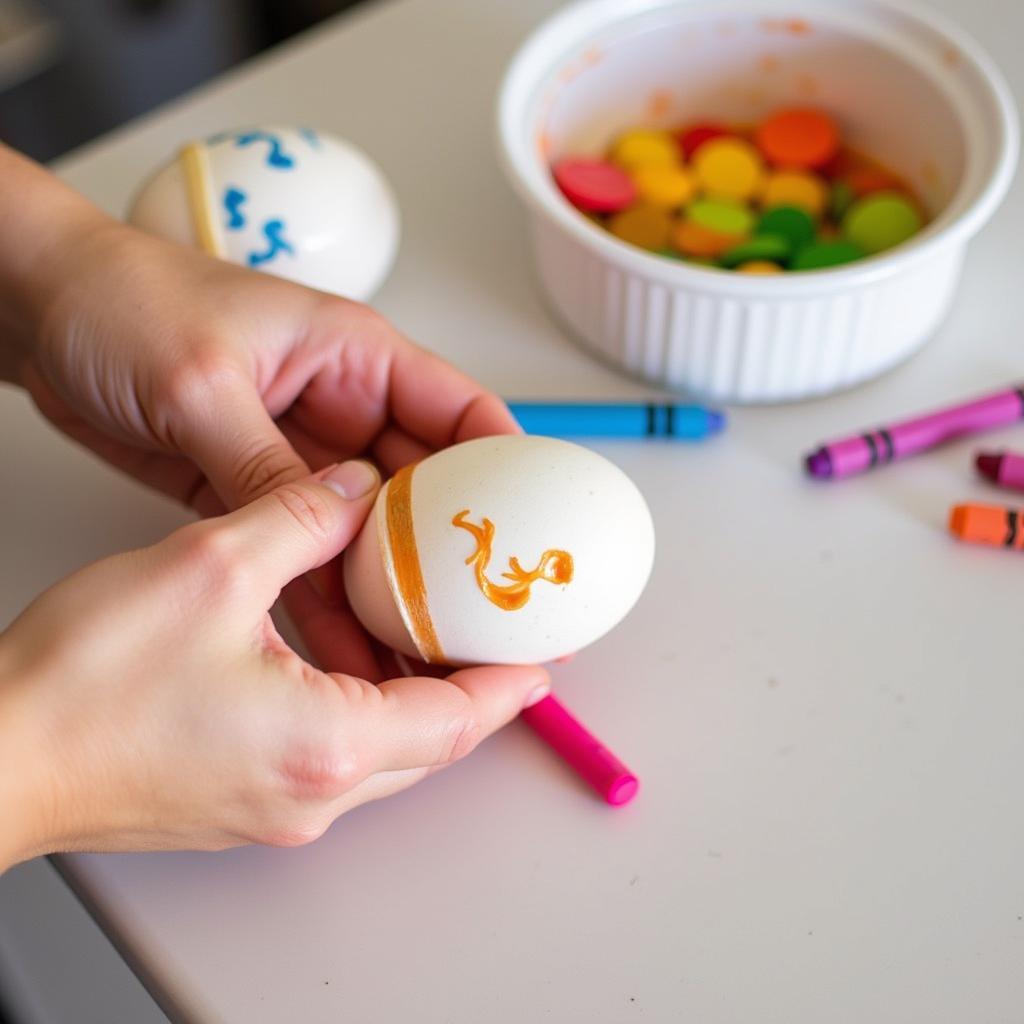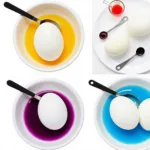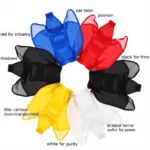Yes, you absolutely can dye Easter eggs with gel food coloring! In fact, many find gel food coloring produces richer, more vibrant colors than traditional liquid food coloring. This opens up a world of possibilities for creating truly stunning and unique Easter egg designs. So, if you’re looking to elevate your egg-dyeing game this year, gel food coloring might just be your secret weapon.
Using gel food coloring to dye Easter eggs is a simple yet effective way to achieve vibrant and long-lasting colors. It’s a popular choice for many because the concentrated formula provides intense hues that truly stand out. Let’s delve into the process and explore some tips and tricks for creating beautiful Easter eggs using gel food coloring.
Dyeing Easter Eggs with Gel Food Coloring: A Step-by-Step Guide
Dyeing Easter eggs can be a fun and creative activity for people of all ages. Here’s a detailed guide to help you achieve the best results using gel food coloring:
- Hard-boil the eggs: Start with hard-boiled eggs. Ensure they are cooked thoroughly and cooled completely before dyeing.
- Prepare the dye: In separate bowls, mix a few drops of gel food coloring with vinegar and hot water. The vinegar helps the color adhere to the eggshells. Experiment with different amounts of gel to achieve the desired color intensity.
- Dip the eggs: Carefully submerge each egg into the dye bath. Use a spoon or tongs to avoid getting your fingers stained.
- Let the eggs soak: Allow the eggs to soak in the dye for several minutes, checking the color periodically. The longer they soak, the deeper the color will become.
- Dry the eggs: Remove the eggs from the dye bath and place them on a wire rack or paper towels to dry.
 Dyeing Easter Eggs with Gel Food Coloring
Dyeing Easter Eggs with Gel Food Coloring
Tips and Tricks for Vibrant Easter Eggs
Want to make your Easter eggs truly spectacular? Here are some helpful tips and tricks:
- White eggs are best: For the most vibrant colors, use white eggs. Brown eggs will result in darker, more muted shades.
- Vinegar is key: Adding vinegar to the dye bath helps the color bind to the eggshells, resulting in more even and intense color.
- Experiment with colors: Don’t be afraid to mix and match gel food colors to create custom shades.
- Create patterns: Use rubber bands, stickers, or wax crayons to create interesting patterns on your eggs before dyeing them.
 Creating Patterns on Easter Eggs
Creating Patterns on Easter Eggs
Can Gel Food Coloring Be Used to Color Eggs?
If you’re curious about using gel food coloring specifically, the answer is a resounding yes! See how to color deviled eggs for some inspiration. can gel food coloring be used to color eggs provides even more detail. Its concentrated formula often leads to deeper, more vibrant colors compared to liquid food coloring.
How Do You Achieve Pastel Shades with Gel Food Coloring?
Achieving pastel shades with gel food coloring is easy! Simply reduce the number of drops of gel you add to the dye bath. You can also dilute the dye further by adding more water. This will create lighter, more delicate shades. You might also want to check out how do you make colored deviled eggs for ideas using this technique.
“Using gel food coloring allows for more control over the color intensity,” says renowned color specialist, Anya Sharma. “You can create anything from soft pastels to deep, jewel-toned hues.”
Cleaning Up After Dyeing
Gel food coloring can stain surfaces and skin. Learn how to get gel food coloring off skin for helpful tips. Always work on a covered surface and consider wearing gloves to protect your hands.
“Clean up spills immediately to prevent staining,” advises cleaning expert, David Miller. “A solution of baking soda and water can be effective in removing stubborn stains.” For adding a unique touch of color to other foods, you can explore how to make the color lavender with food coloring. Also, how to color deviled eggs can provide inspiration for using these techniques beyond traditional Easter eggs.
Conclusion
Can you dye Easter eggs with gel food coloring? Absolutely! It’s a fantastic option for achieving rich, vibrant colors. By following the steps outlined above and experimenting with different techniques, you can create truly stunning Easter eggs that will impress everyone.
FAQ
- How much gel food coloring should I use? Start with a few drops and add more until you achieve the desired color intensity.
- Can I reuse the dye bath? It’s best to use fresh dye for each batch of eggs to ensure optimal color vibrancy.
- How long should I soak the eggs? Soak for several minutes, checking the color periodically, until the desired shade is achieved.
- How do I prevent the eggs from cracking while boiling? Add a tablespoon of vinegar to the boiling water to help prevent cracking.
- What can I do with leftover dyed eggs? Deviled eggs or egg salad are great ways to use up leftover dyed eggs.
- Can I use gel food coloring on brown eggs? Yes, but the colors will be darker and less vibrant than on white eggs.
- How do I create a marbled effect? Add a few drops of oil to the dye bath to create a marbled effect.
Need Help with Your Color Projects?
Contact us! Phone: 0373298888, Email: [email protected] or visit us at 86 Cầu Giấy, Hà Nội. We have a 24/7 customer service team ready to assist you.

